Abstract
Malaria control, except in tropical Africa, will probably continue to be based to a large extent on the use of insecticides for many years. However, the development of resistance to insecticides in the vectors has caused serious difficulties and it is necessary to change the strategy of insecticide use to maximize their efficacy. A thorough knowledge of the ecology and behaviour of each vector species is required before the control strategy can be adapted to different epidemiological situations. The behavioural differences between sibling species have been recognized for several years, but study of this problem has recently been simplified by improved means of identification that involve chromosomal banding patterns and electrophoretic analysis. Behavioural differences have also been associated with certain chromosomal rearrangements.
New records of insecticide resistance among anophelines continue to appear and the impact of this on antimalaria operations has been seriously felt in Central America (multi-resistance in Anopheles albimanus), Turkey (A. sacharovi), India and several Asian countries (A. culicifacies and A. stephensi), and some other countries. Work continues on the screening and testing of newer insecticides that can be used as alternatives, but DDT, malathion, temephos, fenitrothion, and propoxur continue to be used as the main insecticides in many malaria control projects. The search for simpler and innovative approaches to insecticide application also continues.
Biological control of vectors is receiving increased attention, as it could become an important component of integrated vector control strategies, and most progress has been made with the spore-forming bacterium, serotype H-14 of Bacillus thuringiensis. Larvivorous fish such as Gambusia spp. and Poecilia spp. continue to be used in some programmes.
Application of environmental management measures, such as source reduction, source elimination, flushing of drainage and irrigation channels, and intermittent irrigation have been re-examined and currently a great deal of interest is being shown in these approaches.
There has been limited interest in the genetic control of mosquitos and the phenomenon of refractoriness in some strains of the disease vectors, with the idea of replacing the vector species with the refractory strain. More research is needed before this approach can become a practical tool.
It is apparent that in future a more integrated approach will have to be used for vector control within the context of antimalaria programmes. Training of staff, research, and cooperation at all levels will be an essential requirement for this approach.
Full text
PDF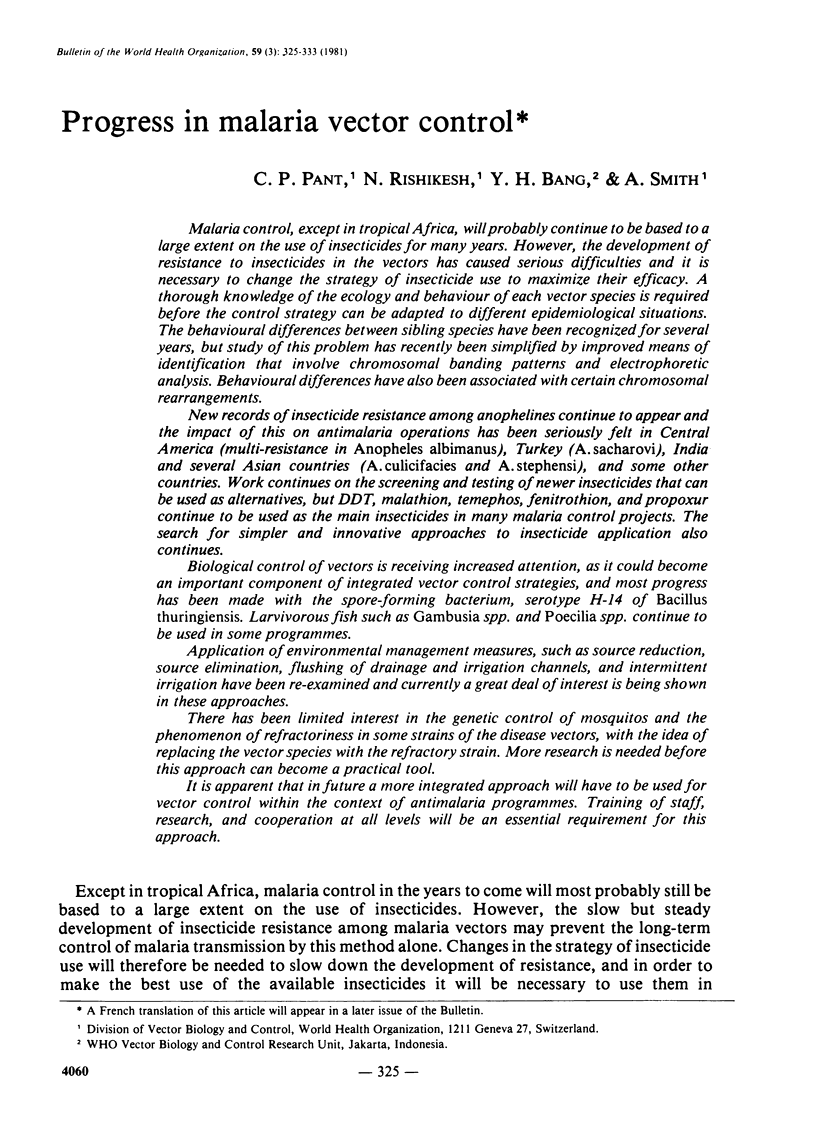
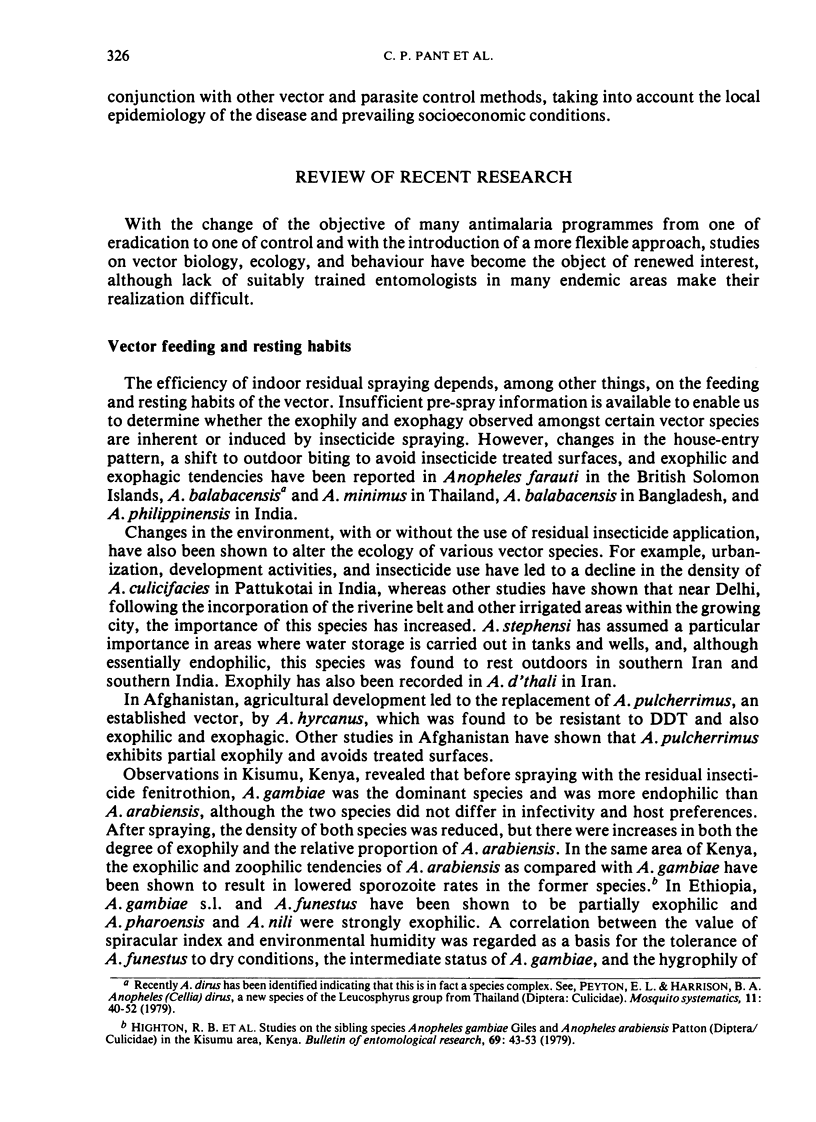

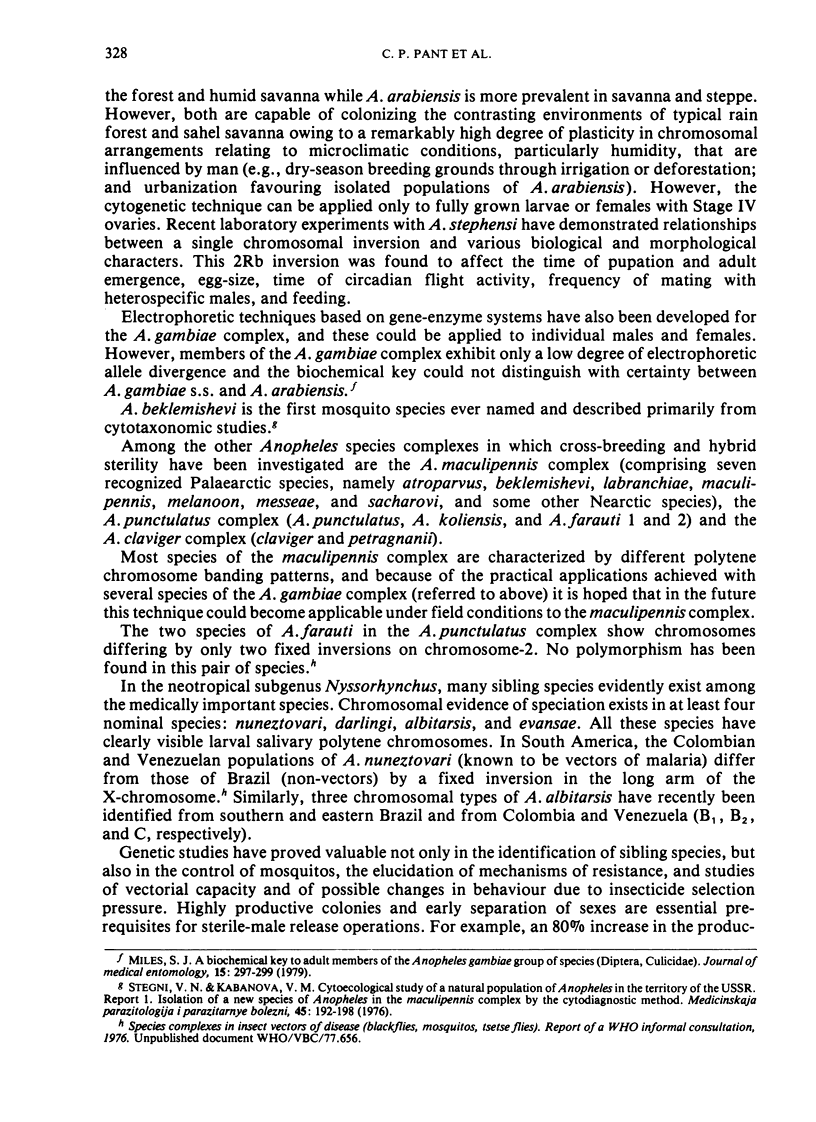
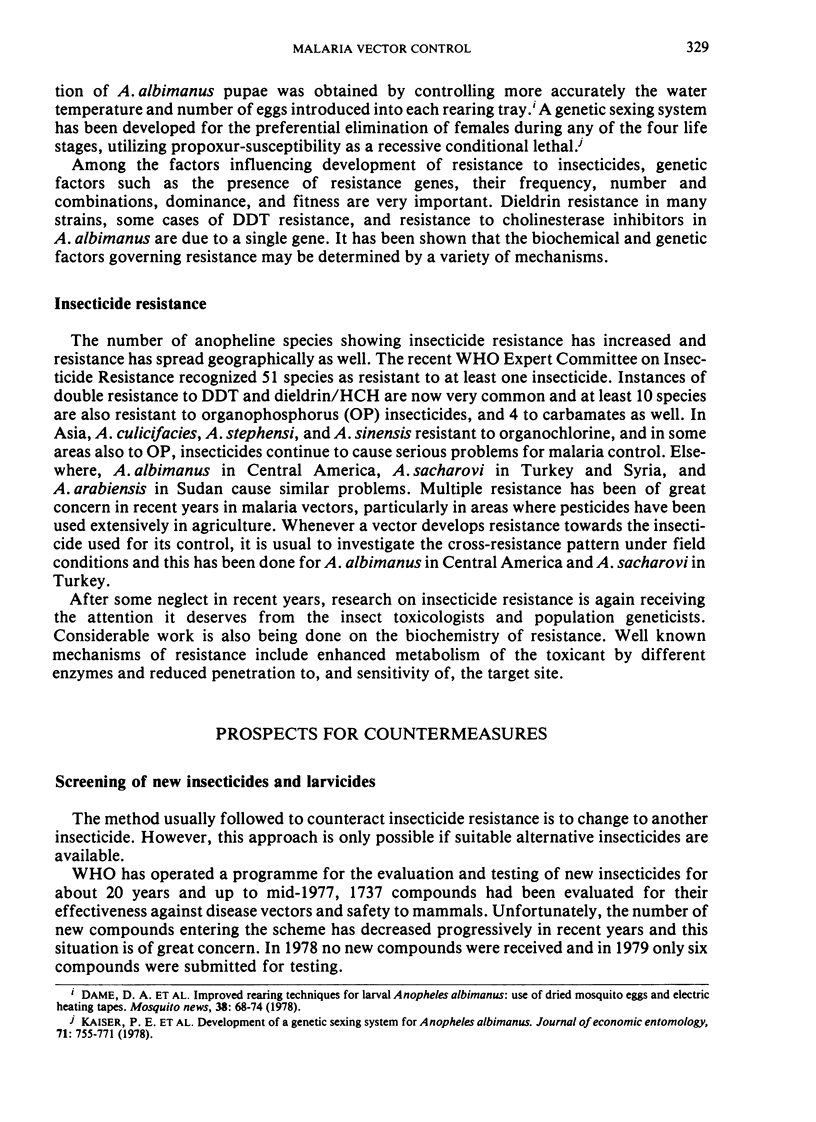
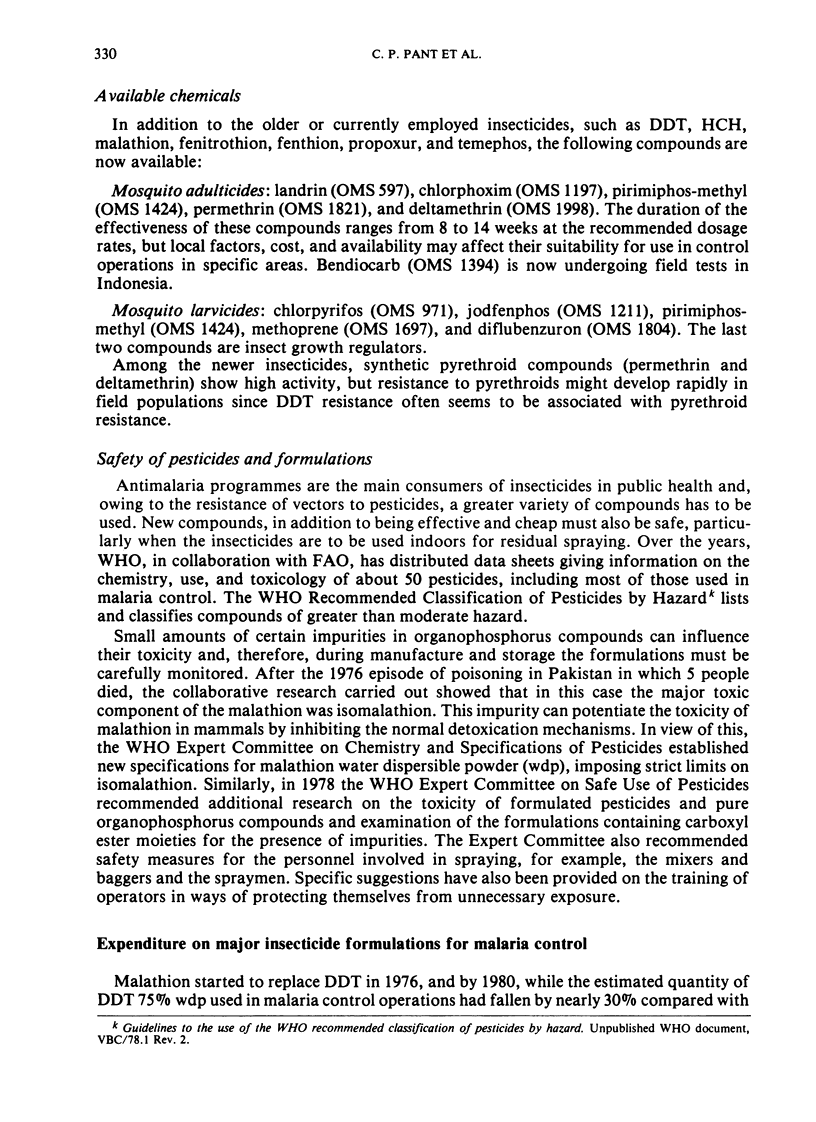
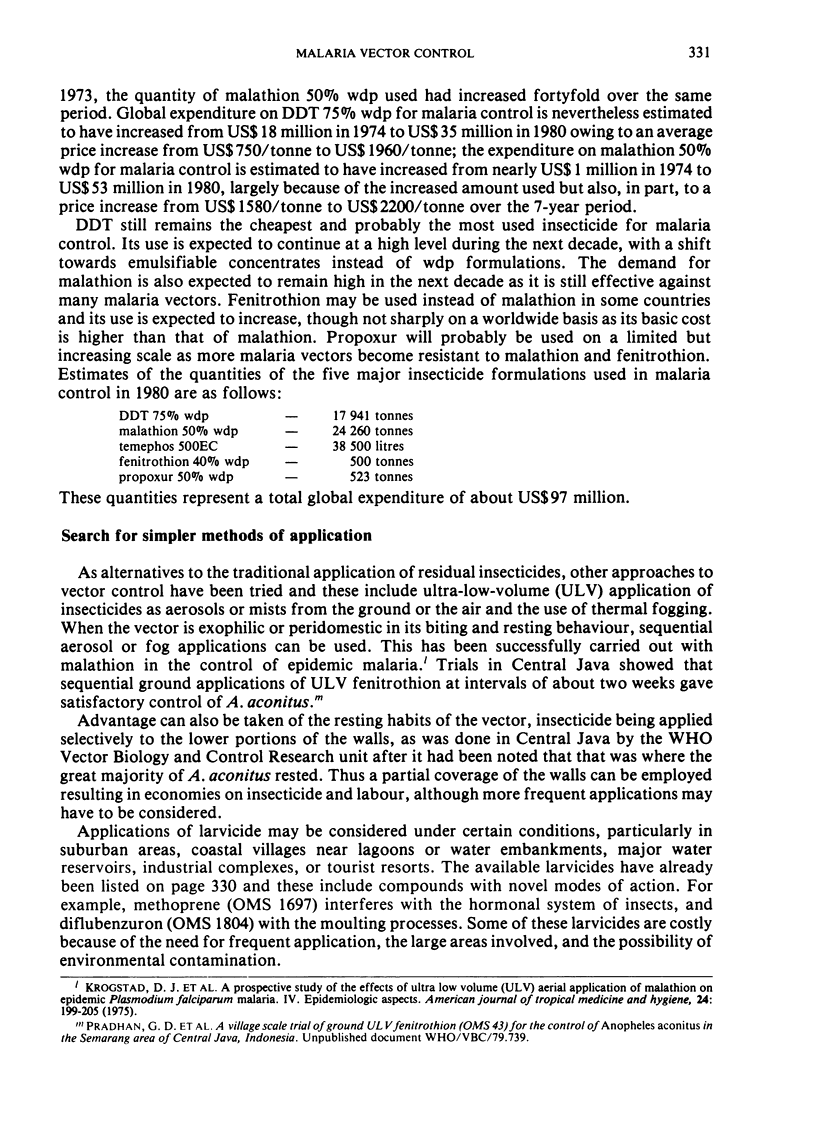

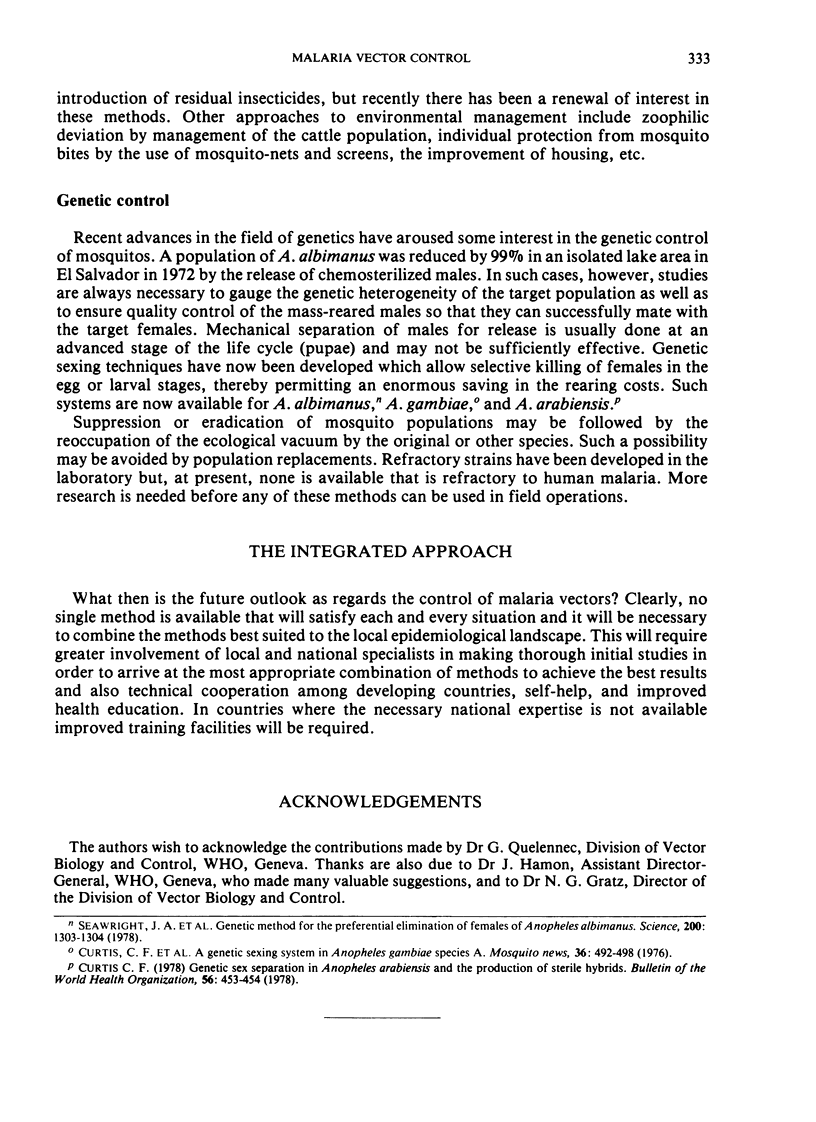
Selected References
These references are in PubMed. This may not be the complete list of references from this article.
- Coluzzi M., Sabatini A., Petrarca V., Di Deco M. A. Chromosomal differentiation and adaptation to human environments in the Anopheles gambiae complex. Trans R Soc Trop Med Hyg. 1979;73(5):483–497. doi: 10.1016/0035-9203(79)90036-1. [DOI] [PubMed] [Google Scholar]
- Curtis C. F. Genetic sex separation in Anopheles arabiensis and the production of sterile hybrids. Bull World Health Organ. 1978;56(3):453–454. [PMC free article] [PubMed] [Google Scholar]
- Krogstad D. J., Joseph V. R., Newton L. H. A prospective study of the effects of ultralow volume (ULV) aerial application of malathion on epidemic Plasmodium falciparum malaria. IV. Epidemiologic aspects. Am J Trop Med Hyg. 1975 Mar;24(2):199–205. doi: 10.4269/ajtmh.1975.24.199. [DOI] [PubMed] [Google Scholar]
- Miles S. J. A biochemical key to adult members of the Anopheles gambiae group of species (Diptera: Culicidae). J Med Entomol. 1979 Mar 23;15(3):297–299. doi: 10.1093/jmedent/15.3.297. [DOI] [PubMed] [Google Scholar]
- Seawright J. A., Kaiser P. E., Dame D. A., Lofgren C. S. Genetic method for the preferential elimination of females of anopheles albimanus. Science. 1978 Jun 16;200(4347):1303–1304. doi: 10.1126/science.663614. [DOI] [PubMed] [Google Scholar]
- Stegnii V. N., Kabanova V. M. Tsitologicheskoe izuchenie prirodnykh populiatsii maliariinogo komara na territorii SSSR. Soobshchenie 1. Vydelenie novogo vida Anopheles v komplekse Maculipennis metodom tsitodiagnostiki. Med Parazitol (Mosk) 1976 Mar-Apr;45(2):192–198. [PubMed] [Google Scholar]


